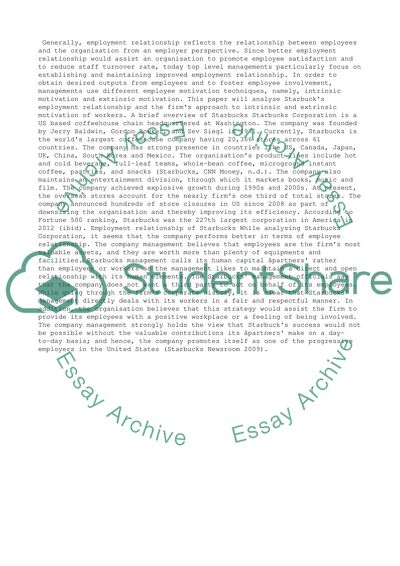Cite this document
(“Starbucks: Employment relationship and the firms approach to intrinsic Assignment”, n.d.)
Starbucks: Employment relationship and the firms approach to intrinsic Assignment. Retrieved from https://studentshare.org/management/1468616-starbucks-employment-relationship-and-the-firms-approach-to-intrinsic-and-extrinsic-motivation-of-workers
Starbucks: Employment relationship and the firms approach to intrinsic Assignment. Retrieved from https://studentshare.org/management/1468616-starbucks-employment-relationship-and-the-firms-approach-to-intrinsic-and-extrinsic-motivation-of-workers
(Starbucks: Employment Relationship and the Firms Approach to Intrinsic Assignment)
Starbucks: Employment Relationship and the Firms Approach to Intrinsic Assignment. https://studentshare.org/management/1468616-starbucks-employment-relationship-and-the-firms-approach-to-intrinsic-and-extrinsic-motivation-of-workers.
Starbucks: Employment Relationship and the Firms Approach to Intrinsic Assignment. https://studentshare.org/management/1468616-starbucks-employment-relationship-and-the-firms-approach-to-intrinsic-and-extrinsic-motivation-of-workers.
“Starbucks: Employment Relationship and the Firms Approach to Intrinsic Assignment”, n.d. https://studentshare.org/management/1468616-starbucks-employment-relationship-and-the-firms-approach-to-intrinsic-and-extrinsic-motivation-of-workers.


